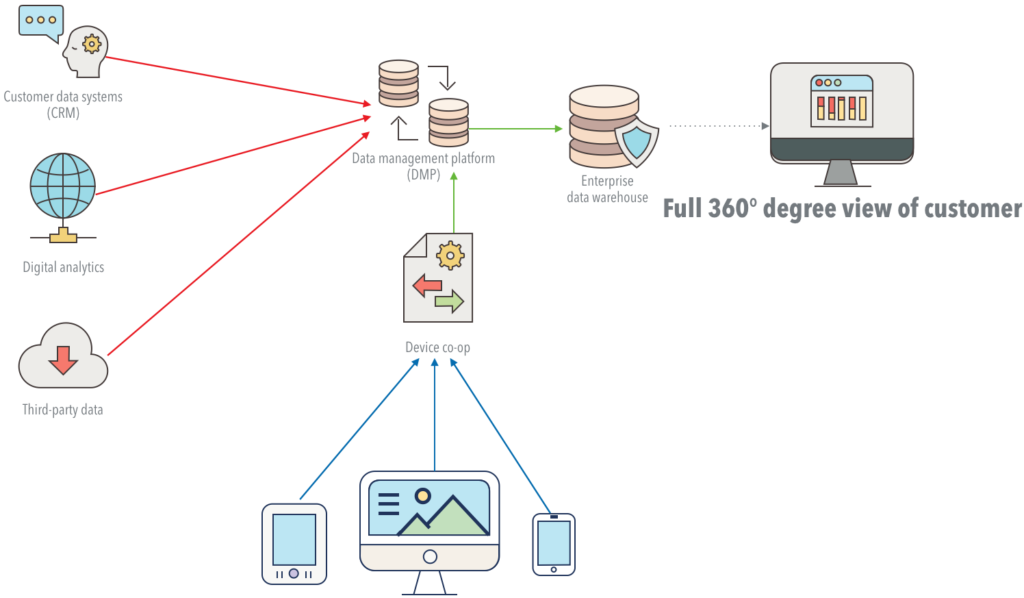Have you ever thought to yourself how nice it would be if you could connect the dots between a user who fills out a lead form on your website and then later becomes a paying customer during a call to your call center? Or wished you could see all of the touchpoints with your customers in one place rather than having to manually mash up spreadsheets from your web analytics tool, your CRM, your ad platforms, etc? You may have been told by the IT folks at your company that this simply isn’t possible since the data lives in different systems that don’t talk to one another. Frustrating, right?
As I’m fond of saying: “silos are for grain, not data”. So why, then, are we still battling data silos in the year 2018? Perhaps it’s because a lot of organizations feel overwhelmed by the prospect of trying to unify several disparate data systems in a way that produces accurate, comprehensive, and actionable data. In fact, I’ve more than once that doing such thing is a “pipe dream” at best. I’m here to tell you, though, that it’s absolutely possible. Even small companies can take concrete steps toward the vision of “Customer 360”, or unified customer data. But where to begin?
Inspired by a thread on LinkedIn started by Kalen Daniel, I decided to create a series of blog posts to begin discussing how you can begin your journey towards a Customer 360 utopia*. This post is an introduction to the concept of Customer 360 and will give an overview of what is involved in the process.
First though, an important note/caveat: every company’s journey will not look the same. The specific steps you must take will depend on what systems currently hold customer data in your organization, how those systems are/aren’t currently connected to each other, how often data is updated, how much data you have, and what you plan to do with that data once it’s unified — among many other things.
What is Customer 360?
It’s probably helpful to begin by explaining the basics of what we’re talking about here. “Customer 360” refers to a methodology by which companies can gain a more complete view of their customers by aggregating data from multiple sources and touch points, including both online and offline data. Below is a basic (if not somewhat typical) example of a Customer 360 architecture.

Let’s break down what this diagram is showing:
- Left: multiple systems containing customer data, including CRMs, digital analytics systems such as Adobe Analytics or Google Analytics, and third-party proprietary data systems, are leveraged.
- Bottom/Center: subscribing to a device co-op such as the one available as part of the Adobe Experience Cloud enables you to identify a single person across all of their devices.
- Top/Center: data from all systems is pushed into a data management platform (DMP), which can be used directly on all digital channels for personalization and optimization, as well as display and search advertising.
- Right: data is pushed into an enterprise data warehouse platform, which then can be further transformed as needed and operationalized for use in reporting/analysis and other business intelligence requirements.
What Are the Benefits of Customer 360?
The end result of all this work: having a “singular source of truth” for customer data across the organization, which empowers the organization with the ability to target their users with relevant, personalized experiences that remain consistent across channels. It also allows data-driven decisions to be made across the organization from a singular and consistent data set.
What is the Overall Process?
I don’t think there’s a single “right way” to go after Customer 360. However, I’ve found the following steps to be critical:
- User Journey Mapping
- Data & Systems Inventory
- Current State Architecture
- Technical Roadmap (Future State)
- Data Governance Plan
For many larger enterprise organizations, the steps above can take between 3 to 6 months to complete. As previously mentioned, though, not every organization is the same; in your organization, this process may take less time or more time. And you don’t have to aim for perfection here; even small steps can make a huge difference in your ability to better understand your customers and your business. For example, I mentioned at the beginning of this article the concept of connecting web leads to CRM conversions. Did you know that this is a relatively simple process that can be achieved by most companies in a matter of a few days? Don’t believe me? Let’s talk; I’d love to prove you wrong.
Parting Thoughts
I want to reiterate something: this is not just a pipe dream. If you are willing to invest in the process, you can greatly advance your organization’s digital marketing and data capabilities. Hopefully, this series of blog posts will be helpful to you along the way. This post was merely an overview; in the next post, I’ll talk about what user journey mapping is and what role it plays in building a solid Customer 360 architecture. In the meantime, thanks for reading; and if you need help embarking on your own Customer 360 journey, please reach out to me any time.
* I’m being more than a little facetious here. Nothing is ever perfect or a utopia. But the benefits you will gain from having Customer 360, or even some of the components that contribute to it, are well worth the time and effort.
